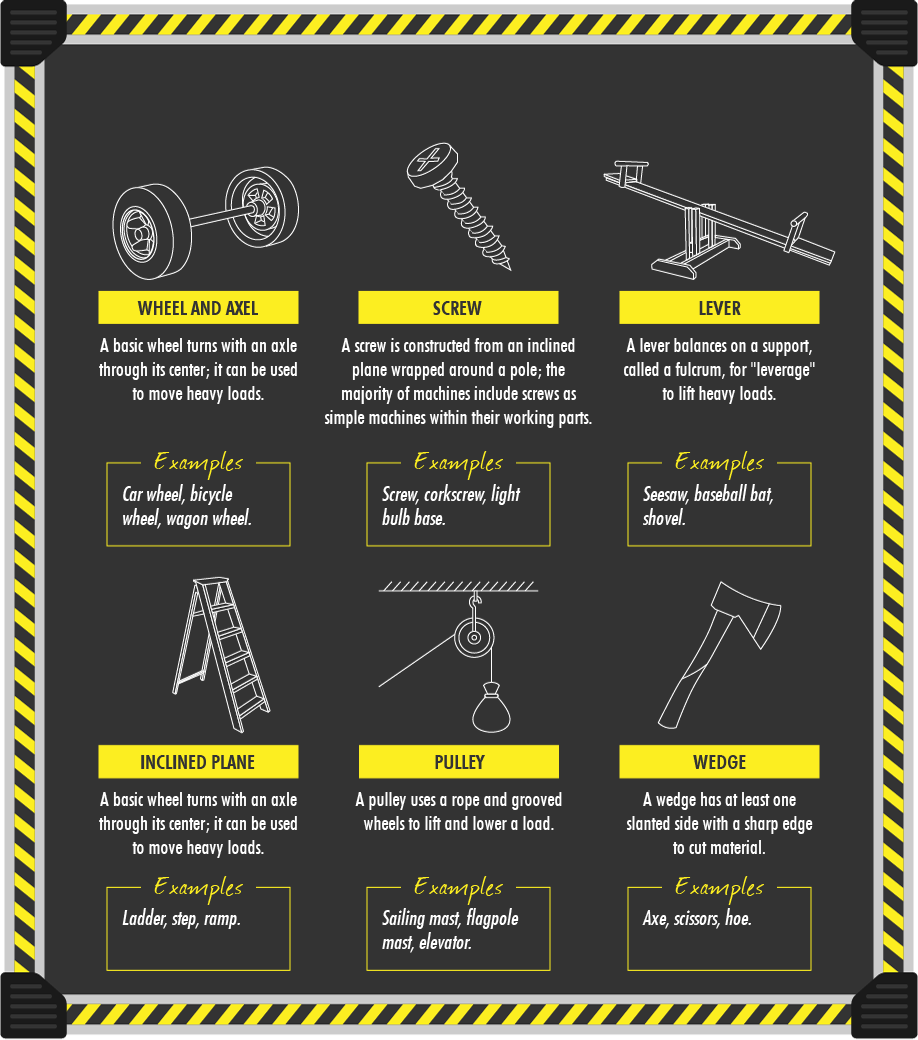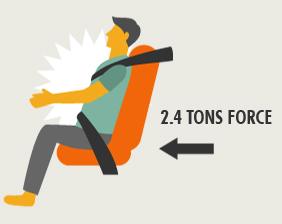Simple Machines in Cars
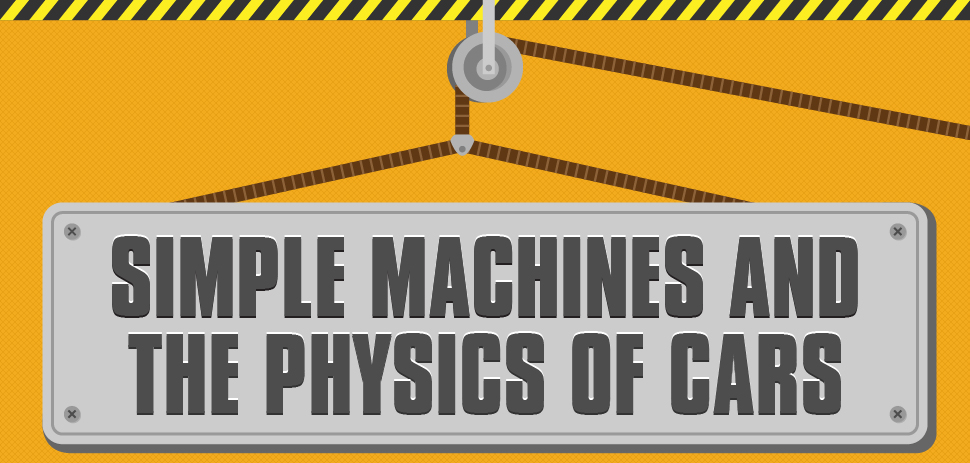
What Is a Simple Machine?
In this modern world filled with flashy gadgets, you’re probably more than familiar with machines by now. But have you heard of a simple machine? Compared to a compound machine that has two or more simple machines working together, a simple machine is a basic tool used in a work process.
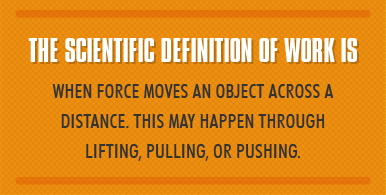
A simple machine completes a work task without all of the complicated components of compound machine. A simple machine has few or no moving parts. You may be surprised to find that scissors, nails, and even baseball bats are considered simple machines!
Here are the 6 different types of simple machines:
Other examples of simple machines include:
- Bicycle chain
- Broom
- Stapler
- Doorknob
- Hammer
- Wheelbarrow
- Light switch
- Pencil
- Screwdriver
- Scissors
As you can see, a simple machine is a simple mechanism, or an everyday object, that offers a mechanical advantage. Even in one of the machines you use most—your car—you’ll find all of the simple machines listed.
If you take a closer look at your car, you’ll see simple machines like:
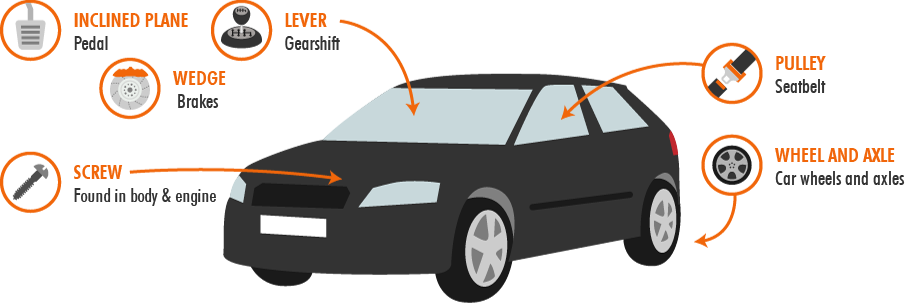
The Physics of the Modern Automobile
We’ve already established that a simple machine uses force to move an object across a distance. When you join two or more simple machines together, working in harmony, you have a compound machine that makes work even easier.
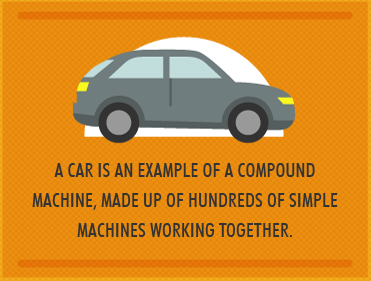
The mechanics and engineering of automobiles can be better explained through the science of physics. Since we’ve all ridden in a car before to get from point A to point B, it’s easy to understand how physics and simple machines work hand-in-hand to create this modern mode of transportation.
Simple machines work with force and motion. In the world around us, motion may occur naturally, but in a compound machine like a car, motion is produced. Simple machines in a car use motion to move a vehicle from one place to the next. This is accomplished through force that may cause resistance to change the motion of an object, either by pushing or pulling.
The force and motion of a car are measured by a number of variables:
These same variables can be used to assess the physics of any moving object, although a car is certainly a relatable example. When designing a vehicle, it’s important for an automotive engineer to understand these basic principles, along with other factors that can affect how a vehicle travels, like friction, air resistance, and gravity.
Physics is an important determining factor in designing car safety
features that will protect a driver in the force of a crash.
As we’ve already pointed out, a seatbelt is a simple machine. When designing a compound machine like a car, the simple machine of a seatbelt must be engineered so that it works as part of the vehicle to hold a passenger in place. A well-designed seatbelt is a critical car safety feature that can keep a passenger from flying forward or being thrown in a car crash. A seatbelt will also reduce the risk of injury by minimizing force placed on a passenger in an accident.
When a car slams on its brakes in a crash, it will decelerate (decrease acceleration) in as short amount of time as possible to avoid an accident. However, Newton’s Law of Inertia points out that an object in motion will continue to stay in motion, unless an unbalanced force intervenes.
A car that crashes into another object will change speed and direction based on the force of the object, whether it is another car, a tree, or a guardrail. In this turn of events, a seatbelt is pivotal to hold a passenger in place and disrupt the force that could throw them from the vehicle. If a person doesn’t wear a seatbelt, force is still present; a passenger may sustain serious injuries after colliding with the windshield or dashboard to slow them down.
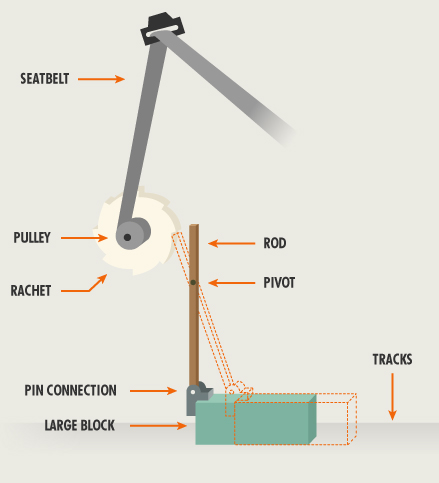
A seatbelt is a simple machine that absorbs inertia in an accident
Example: If a car slams on its brakes to stop in 1 foot while traveling 30 miles an hour
-
non-stretching seatbelt
The amount of force on a 160 pound driver would be 2.4 tons.
-
stretching seatbelt
The amount of force on a 160 pound driver would be 1.6 tons. Stopping distance would also increase by 50% to 1.5 feet.
-
without seatbelt
Force would increase to 12 tons. Stopping distance in a collision would be even shorter, one fifth of a driver wearing a seatbelt, so that the force impact on the driver would increase by 5 times.
Another vital car safety feature that relies on the laws of physics is
the air bag
Airbags are designed to work as a complementary feature to seatbelts.
Their purpose is to distribute force placed on a passenger during an accident by minimizing vehicle deceleration rate in the hopes of reducing the risk of injury. Even though air bags are best used with seatbelts for vehicle safety, they are also safety tested for unbelted passengers to meet federal regulations.
To disrupt this force and potentially save a life, an air bag is designed to inflate in mere milliseconds. Airbag deployment is calculated based on an algorithm located in the sensing and diagnostic module (SDM) of a vehicle. The SDM will alert an air bag to deploy if danger is detected in door-pressure sensors and accelerometers in the vehicle. Accurate air bag deployment is key to not only protect a passenger from injury but to also prevent unnecessary air bag use.

Like the simple machine of a seatbelt, an air bag is designed to slow down a passenger’s speed to zero to reduce injury in a crash.
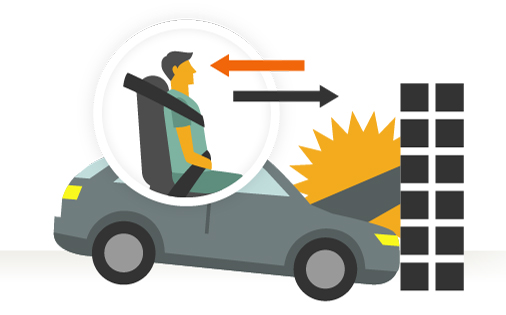
Once again, based on the laws of motion, objects and passengers in a vehicle will continue to move with the same momentum in a crash, unless they are restrained. In a collision, a car’s momentum will change in a split second, but a passenger’s will not. Seatbelt and air bags are critical to stop the momentum of a passenger and cushion the force of a crash.
In a car accident, kinetic energy and momentum are transferred from one object to another. Kinetic energy is the energy of motion; momentum is the combination of mass and velocity.
When a car collides with another vehicle or
stationary object, one of two collision types may occur:
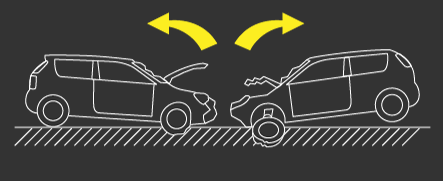
In an elastic crash, two objects will collide and bounce away from one another. An elastic collision will conserve both kinetic energy and momentum with very little energy loss. For example, the bumper of a car will bounce back in a crash to minimize impact and damage compared to an inelastic collision.
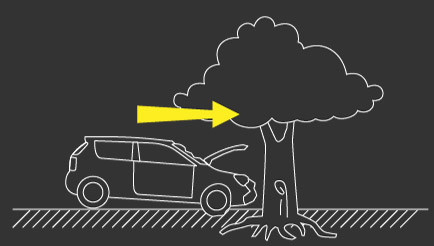
In an inelastic crash, two objects will collide without bouncing away from one another. This will conserve momentum; total momentum for both objects will remain the same before and after the crash. Kinetic energy in a crash will be released through heat, sound, and object damage.
In any kind of crash, every safety feature counts. Physics dictate each aspect of vehicle safety design
to protect passengers, including:
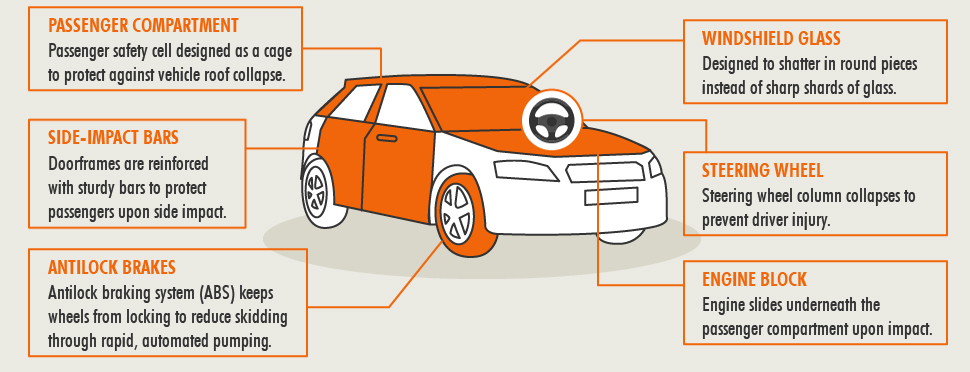
Cars are also designed with crumple zones to absorb the force of impact,
along with the safety features listed above.
A bumper may be beneficial in an elastic crash at a low speed since it absorbs impact and bounces back so that all energy is transferred back into motion. But at a higher speed, an inelastic crash is preferred so that the car crumples instead of bouncing around with more force. A car crumple zone, or crush zone, will collapse in a high-speed collision to absorb impact energy and protect passengers in the vehicle.
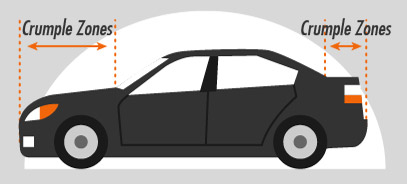
Once the crash zone of a car begins to crumple, abrupt deceleration can be extended by even a few tenths of a second. The goal of this design is to shield car passengers from direct force in an accident by incurring damage to the vehicle itself. Well-designed crumple zones will use up force in a crash that might otherwise be directed to passengers or more valuable parts of a car.
5 Major Advances in Automotive Safety Technology
From simple machines to seatbelts to crumple zones, vehicle engineering has come a long way.
5 major milestones in automotive safety technology on the open road:
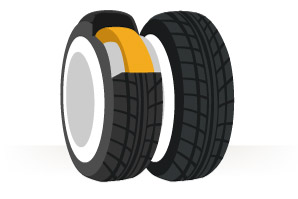
Run-flat tires
Created by BMW, run-flat tires will signal a red light in the dashboard if a tire goes flat; the internal and external tire design will offer an extra 50 miles at up to 50 mph on a flat tire to get to a repair shop.
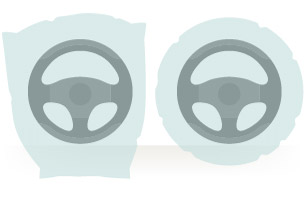
“Smart” air bags
Also known as dual-stage air bags, Subaru smart air bags offer low-stage and high-stage deployment calculated by impact; air bags may account for passenger weight to prevent air bag-related injuries and protect small children.
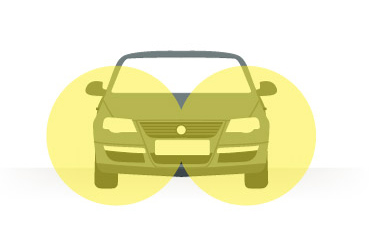
Intelligent headlights
Carnegie Mellon University researchers have invented headlights that can distinguish between raindrops and snowflakes using camera motion tracking; LED lights will flash on and off based on weather conditions to reduce reflection by up to 70%.

Reinforced plastics
Manufacturers like BASF, Bekaert, and Voestalpine have collaborated to reinforce thermoplastic materials with steel cords, used in body, bumper, and interior trim construction; steel-reinforced plastic materials in a car will help to improve collision performance by absorbing energy in a crash.
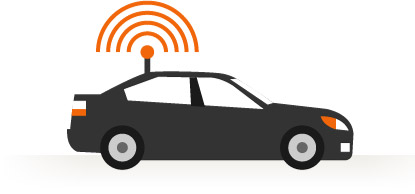
Vehicle-to-Vehicle communication (V2V)
V2V is a vehicle technology of the future, currently undergoing tested by Ford; V2V may help to reduce accidents by allowing wireless communication to transmit direction, location, and speed between vehicles.
Yes, driving is a science.
A car may have started out as simple machines working smoothly together to provide a reliable means of transportation. Thanks
to countless technological innovations, vehicle engineering has advanced by leaps and bounds. Modern cars are designed for
safety based on crash physics with tech-forward features thrown into the mix to improve the average driver experience.



